Bill Bates, who has brought his more than 20 years of experience training roughly 50 different breeds of dogs in obedience and/or field work to California Karelians, has some worthwhile words on training...
The problem that I have repeatedly found over the years with books about training is that they all have two major short comings. First, they treat all dogs as the same. All poodles are neurotic, German Sheppards make the best police dogs, all retrievers retrieve, etc. While each breed registered with the AKC has certain general characteristics, each individual dog also has his/her own personality within those breed characteristics. What works for one breed will not always work with another. I have even found that to be true among puppies of the same litter. Secondly, the authors generally don't tell you what to do if their methods don't work, and they really can't, because they don't see the reaction of the dog as the person is training his or her dog.
Now, take these challenges and multiply them ten-fold when you are dealing with a Karelian Bear Dog. Bear Dogs can be loving, family oriented dogs, but you must remember that they also have an instinct for survival that has not been bred out of them like most of our modern breeds of dog. That instinct is strong and based on a long history. You must remember that this breed has not been selectively bred by man until recently, but rather, they are much as they have always been. Their instinct for survival is as strong as it was many, many years ago.
A KBD is not a pet in the usual sense. When trained correctly, a KBD will be your companion and protector. The training isn't difficult to learn, but it does require that it be performed in a what that earns the dog's trust and respect as the pack leader. You can't demand submission through force, as you can with other modern breeds.
Years ago I had the privilege to train a wolf hybrid, and he turned out to be a great and obedient dog. He, with the Malamute in his blood line, responded more like a dog than a wolf. This is not the case with most Karelian Bear Dogs. They are a primitive dog, and must be treated with the knowledge that they are different. Having said all this, I hope I have not discouraged you in any way. The Karelian Bear dog is an intelligent and loving animal, quick to pick up on what you want of him. Just have California Karelians tell you about how we had young puppies doing agility, and you will be convinced of the KBD's unique and remarkable qualities.
Rule #1: BE CLEAR, DECISIVE AND CONFIDENT
"Decisive" refers to a lack of hesitation about what you want your dog to do.
 Your tone of voice must convey "you mean business." Your tone of voice must convey "you mean business."
 If you give a command, ALWAYS BE IN A POSITION TO REINFORCE THAT COMMAND. If you give a command, ALWAYS BE IN A POSITION TO REINFORCE THAT COMMAND.
If you give a command that the dog does not follow EVERY TIME, you will teach the dog that you don't mean what you say.
You can't change the command, or even your body language while giving the command, and expect your dog to learn the vocabulary.
What skills should be taught
Training techniques will vary with the age of your dog and what you are intending to teach. Basic dog obedience is generally believed to consist of "sit", "come" and "stay." Socialization skills are also important to count among your dog's capabilities. You might also hear the term "foundation skills", which encompass a broad range of proficiencies, assuming your dog has mastered the basic obedience skills. These additional skills include the basic commands performed under more challenging conditions, such as over longer distances, under the distraction of noise, in varying weather conditions and at different times of day. The foundation dog skills might encompass entirely new skills, such as safe transporting with other dogs, swimming 50 feet, climbing on rocks, or crawling under a fence.
Below, Bill Bates shows his softer side as he kisses California Karelians' Mishka. After over 20 years experience training roughly 50 different breeds of dogs in obedience and field work, Bill began training exclusively with California Karelians. He appreciates Karelian Bear Dogs for their "intelligence, independence and awareness of their surroundings." He believes, "If they respect you--and you have to earn their respect and trust--the sky is the limit on training."
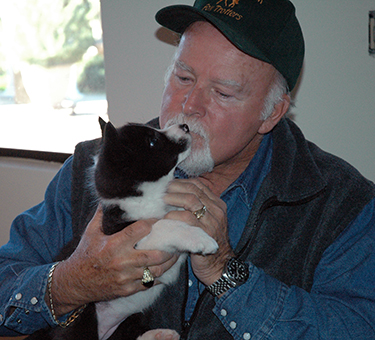
Early puppy "training"
Generally, formal teaching of obedience skills should not start until your puppy is at least six months old. Yet, before six months of age, a lot of behavioral traits and habits can be "taught" in an informal manner, which will make formal training easier. This first "training" phase is an especially important time for bonding with your puppy (above) and socializing your dog (below). Just having an older Karelian meet a younger Karelian creates an opportunity to reinforce the social skills of both dogs.
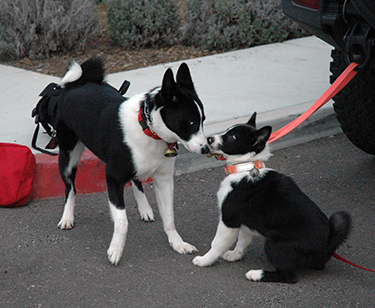
During this phase, spend as much time as you can with your puppy, and take her with you as much as possible. Time your puppy spends bonding with you--and socializing with family members, friends and other dogs--serves as the foundation for a mutually fulfilling relationship with your Karelian.
Games can be an important part of the early bonding process. You can create many hours of play time with a piece of faux fur or a tennis ball. To help lay the foundation for later, more formal training, interact with your puppy as she plays. Praise the puppy for showing the slightest interest in a toy. Once the puppy has the toy in her mouth, grab on and gently move the toy right and left (never tug forward) to encourage more play. When play time is over, put away the toys, so the puppy will associate the toys with the act of playing. You may very well find that your puppy will make a toy out of household items just laying around. If your puppy finds a new toy, be sure to praise his ingenuity! All this will encourage your puppy's play drive.
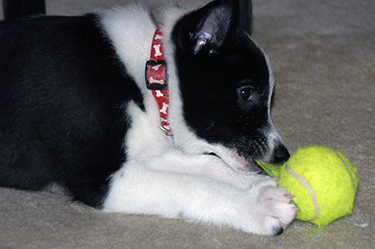
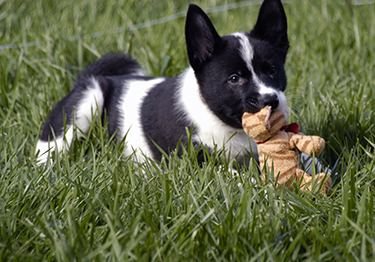
As your puppy matures, you can very gently introduce him to such words as "come" or "sit", rewarding profusely for the slightest correct behavior. Early dog obedience training should be punctuated with lots of praise. At this stage, it’s about working together and forming that bond of mutual trust. Below, praise your puppy for everything he does right, even if he exhibits the desired behavior for just a moment.
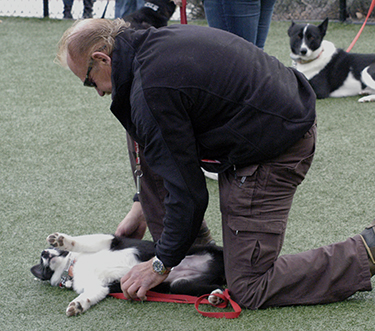
As in all training phases, you don’t want to make the mistake of communicating too harshly or expecting too much. The term “training scars” characterizes a negative response developed in a dog as a result of the being exposed to overly demanding handling or harsh corrections. While training scars can be overcome, these behavioral problems can be avoided, and the training experience can be faster and more enjoyable.
Formal obedience training
The second training phase will begin when you start formal obedience training. Both obedience and socialization skills should be introduced. Although raining scars should be avoided, an appropriate amount of correction will be necessary to ensure consistent compliance and prevent dog aggression.
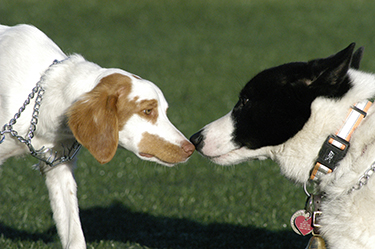
The amount of time you train each day will vary with the dog's attention span. It is much more important to end with a successful behavior than to tire the puppy mentally. Three to five minutes will be more than adequate for a three or four month old puppy. Consistently training each day is key.
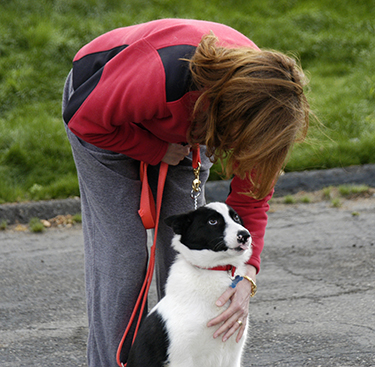
As you work with your dog, realize that all dogs of the same breed are not the same. Each has it’s own personality and will respond differently to correction, and it is important to understand dog psychology when determining how to correct your dog. Below, during this phase, praise continues to be a very important to maintaining your dog's motivation.
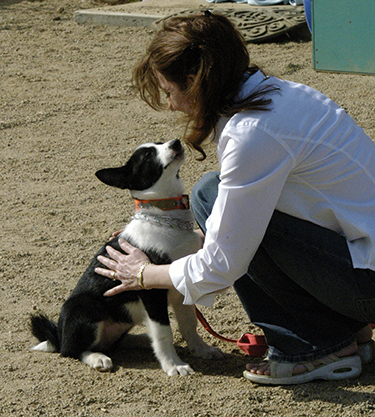
Below, once your dog responds consistently to the basic commands, you can begin to introduce the three D's of training: distance, distraction, and duration.

Throughout your training, please keep in mind that your dog's success will in large measure depend on the dog handling skills you possess.
Field work

The third phase, which I call field work, should only commence once the puppy has successfully learned the basic obedience skills. This may include an activity such as agility or search and rescue. |